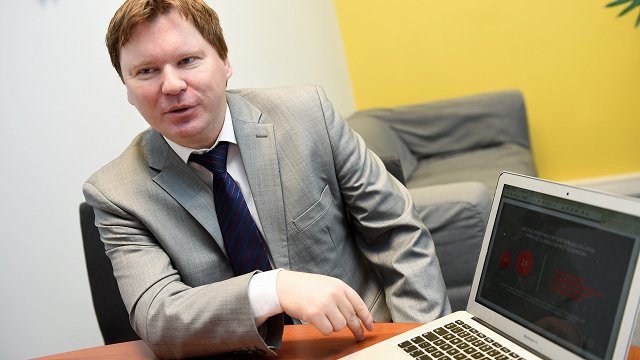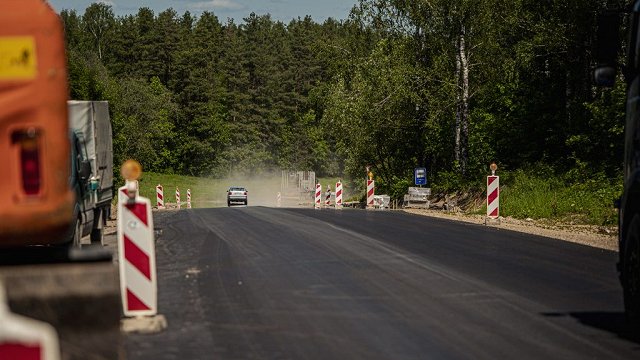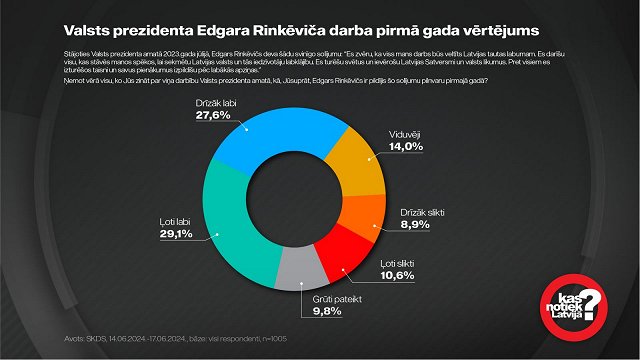According to the Ministry itself, it has "prepared a new strategy for Latvia's economic growth... The main goal of this strategy is to double the economy's volume within the next ten years, achieving a GDP of €83 billion by 2035. This will be accomplished by significantly increasing the productivity of Latvian companies – from 60% of the EU average in 2023 to the EU average level by 2035."
The bad news: it won’t happen.
Let me argue why. The report is very long (60+ pages, and downloadable here) with myriads of suggestions and a lot of slick infographics but let me here deal with five stated key goals for the 2023 – 2035 period:
1. Annual growth of the economy of 4-5%.
2. Employment of at least 900,000 persons.
3. Investment as a share of GDP to increase from 18% to 25%.
4. Exports as a share of GDP to increase from 64% to 85%.
5. Research and development (R&D) spending as a share of GDP to increase from 0.75% to
3.2%.
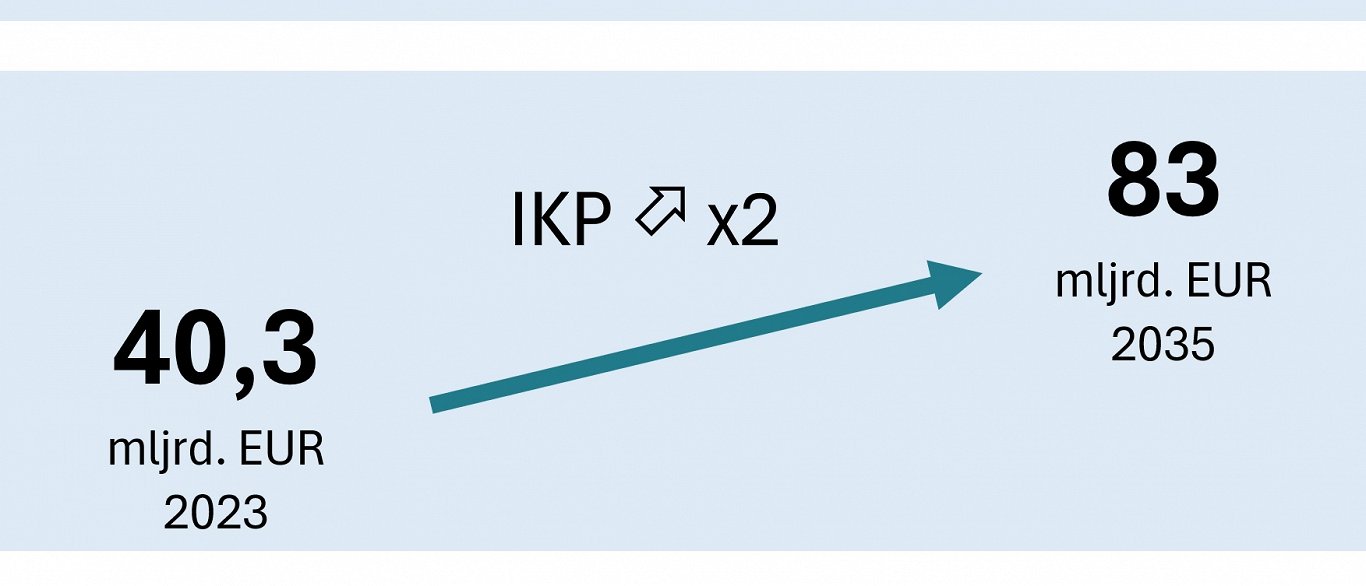
Taking these points in turn:
1) Doubling annual nominal GDP by 2035 requires around 6% growth per year. That's 2% for price growth if the ECB target will be met, leaving 4% needed for real growth. Latvia’s average annual growth experience since 1995 has been 3.4%, (see table 1).
Growth is typically higher, the poorer a country is so it is hard to see why Latvia, today much richer than in 1995, should suddenly start growing significantly faster. During 2010 – 2023 growth averaged only 2.5% per year and the very high growth rates during ex-PM Kalvitīs’ “fat years” were only possible with an unsustainable credit boom feeding it. My evaluation: 4% annual growth is unrealistic.

2) Employment today stands at some 880,000 persons, so 900,000 at first glance seems reachable and for the past ten years actual employment has hovered around that number (see figure 1). But the labor force, the pool of employable persons is only around 950,000 persons and given the demographic development in Latvia it will shrink towards 2035, making the 900,000 mark hard to reach. My evaluation: Dubious whether 900,000 persons will be employed by 2035.
Figure 1: Labour force and number of persons employed in Latvia, 2002 Q1 – 2024 Q1
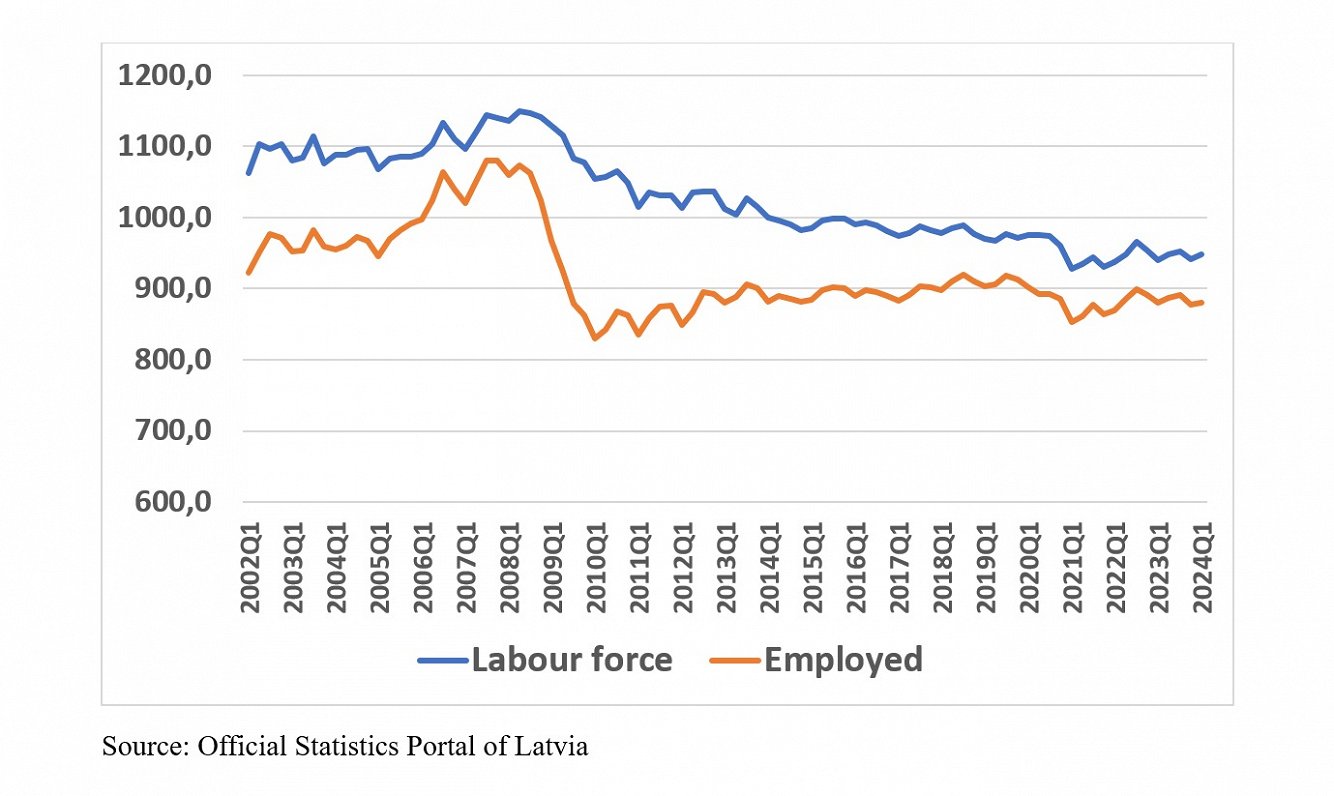
3) Investment (total fixed capital formation) has been hovering around 22-24% of GDP in recent years. It exceeded 30% in 2005 – 2008 but that was due to the big and unsustainable real estate boom at the time. My evaluation: Doable, although I am not quite sure where all this investment will come from. Geopolitical tension certainly has to recede for this to happen.
4) Latvia is a very open economy with high exports to GDP, (see Figure 2). Latvia became more export-oriented after the financial crisis with exports jumping from around 40% of GDP to 60%. The most recent figure (2023) is 64%, down from 2022 due to slow growth or recession in several trading partner countries as well as sanctions vis-à-vis Russia. Globalization is in retreat but a positive spin could be that some of what the EU will no longer buy from China might end up being made here. But reaching 85% (and looking more like Estonia and Lithuania) will be challenging. My evaluation: I want to see it before I believe it.
Figure 2: Latvian exports of goods and services as a share of GDP, 1995 – 2023
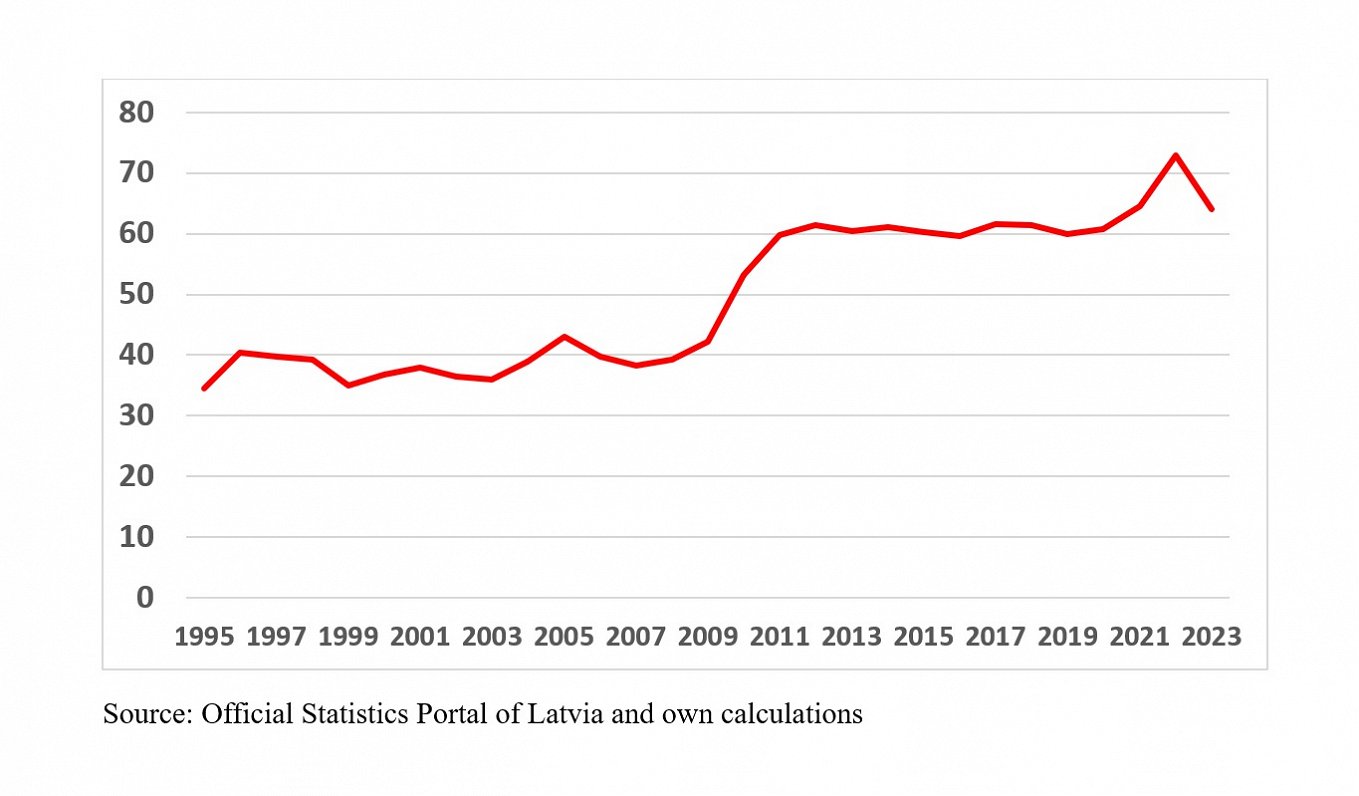
5) R&D spending correlates with the sophistication of an economy. Advanced goods require a lot of R&D spending to be developed but in Latvia such spending is very low by international standards and has always been so, (see Figure 3), reflecting that a lot of production here is just not all that advanced – and that it is mostly a service economy where service production just does not need that much R&D spending.
The current value is 0.75% of GDP; it has always been below 1%, it is the third-lowest in the EU, only ahead of Malta and Romania – so how can someone suddenly come up with a quadrupling within 12 years as a realistic scenario? My evaluation: Pure science-fiction.
Figure 3: R&D spending as a share of GDP in Latvia, 2000 – 2022
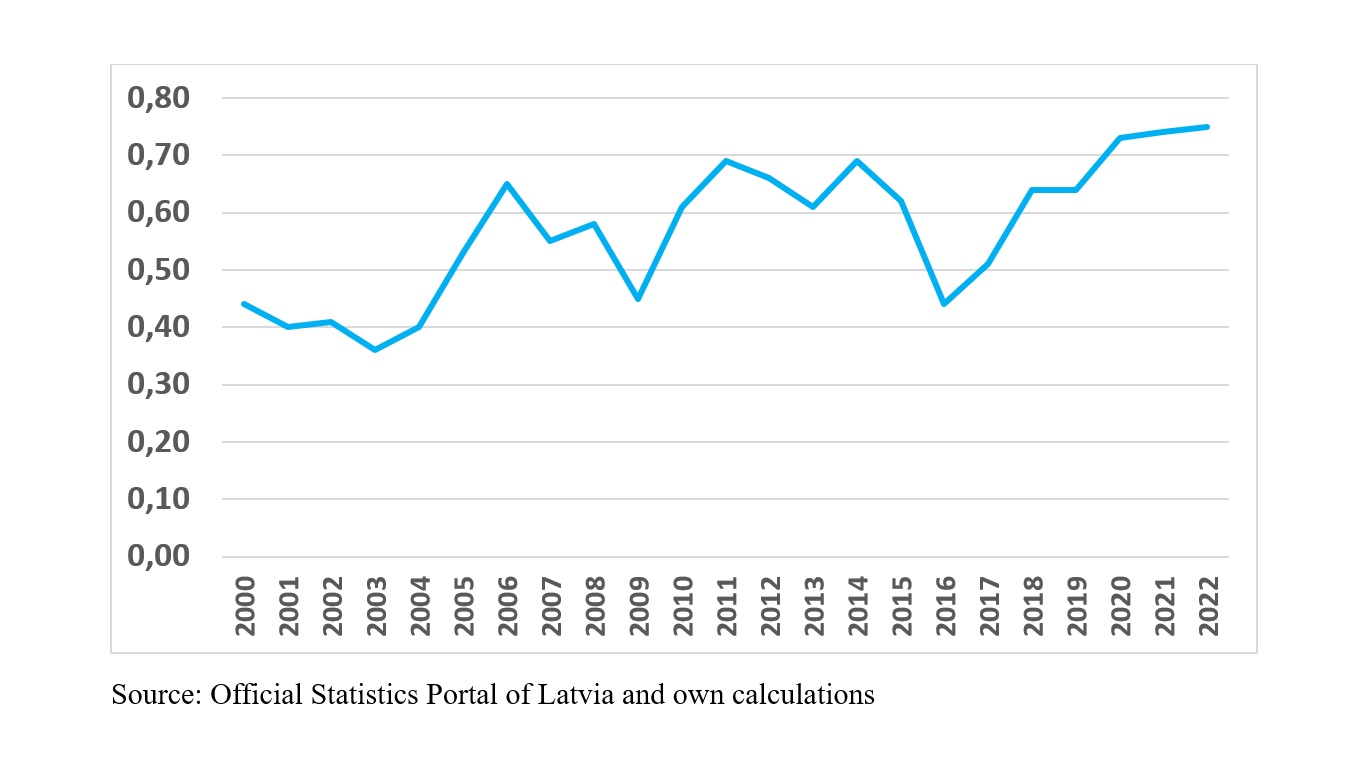
The simple conclusion is the bad news I posed at the beginning – this just won’t happen. And that makes this report – which otherwise has many pieces of interesting information – rather useless because it is so unrealistic.
It makes a type of mistake I have seen so many times over the years here in Latvia. Let me make just one example. One of the many goals in the report is to “use Latvia’s advantages in the creation of new exportable products and services”. But what it does not explain is a) what are those advantages? b) which sectors of the economy could create these new exportable goods? and – by far most important – c) why has this so far not been done?
Then this report could be useful for economic development of Latvia. As it stands right now it just isn’t.
Morten Hansen is Head of Economics Department at Stockholm School of Economics in Riga and former Vice-Chairman at the Fiscal Discipline Council of Latvia.



